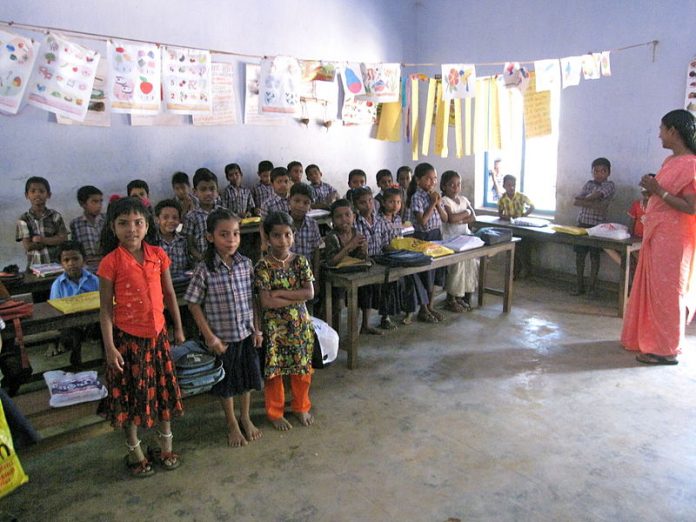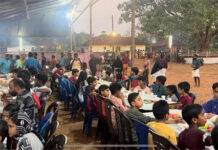When the images of thousands and thousands of Indian migrant workers leaving the urban cities and towns and returning back to their native villages flocked our imagination amid the lockdown, the story was quite different for migrant workers who had gone for work to Kerala.
When the lockdown was announced, millions of Indian migrant workers experienced a sudden job loss and in the absence of wages and meagre savings already exhausted within just a few days, there was no way in which they could afford to stay back in the metro cities.
While a large section of the migrants waited for their turn in desperation to get a seat on a bus or train organised by the Centre and states, lakhs of others took the arduous journey of hundreds of kilometres on foot.
In the absence of food, water, money or transportation facilities, hundreds succumbed even before they could reach back to their villages due to exhaustion and fatigue, illness or accidents on highways or railway tracks.
The plight of the migrant class became the overpowering reality amid the lockdown and as it let more than 120 million Indians unemployed, it weakened its economic fabric and posed multiple challenges before it.
When Migrants Prioritise the Education of Their Children
While this was the overarching story of migrants across different parts of India, there was something that was drastically different for some migrant workers who had been employed in the different districts of Kerala. The reason was the education of children.
Many migrant class parents employed in the state decided against going back to their native states because they didn’t want their children to miss out on their education. The state’s Roshni programme is one that focusses on the education and wellbeing of children from the migrant families while training them to become proficient in Malayalam.
The scheme was started three years ago and has been quite fruitful in ensuring the education of children from migrant families and familiarising them with Malayalam. It is in this context that a recent article published in IndiaSpend throws light on the far-reaching impact of the program and the state’s educational initiatives for the children of the migrant class families. Drawing insights from the article, let us explore how the program successfully empowered the educational landscape for children from migrant families amid the lockdown.
Even while the chunk of migrant families left the cities and flocked to their own states because of the impossibility of survival amid the lockdown, the Roshni program continued to function taking its classes from the physical classrooms to the video and online medium.
What was creatively done to adapt to the needs of the changing times was that many volunteer teachers were taken on board and teaching was heavily disseminated to reach out to not just children from migrant families but also involving their parents in the process.
These volunteers conducted classes in a way that not only the children but also their parents felt integrally involved in this process and because of this the scheme has been able to ensure that children stay enrolled despite the hardships that the pandemic has unleashed on the migrant class. The success story can be estimated by the fact that out of 922 students who are enrolled in the Roshni programme in Ernakulam, 90% had stayed back as of May 10-46days after the lockdown had been announced according to Indian Spend.
These families had stayed back because they prioritised their children’s education and were happy that their education mattered even for the state. Although we don’t know the exact number of migrants who live in Kerala, as much as 11% of the population now (3.5 to 4 million) could be migrant according to a study conducted by the Centre for Migration and Inclusive Development in 2017.
One of the greatest fallouts of the economic lockdown in India has been the rise in unemployment rates. The unemployment rate for April 2020 reached 23.5%, which was three times the rate recorded in March.
It was in June that the Kerala government decided to inform the Centre that while 153,000 workers had left for their native states on 100 special trains for returning migrant workers, 120,00 migrants were still around.
But one of the most important questions that arise at this juncture is regarding the survival of families that had their children enrolled in the Roshni scheme but no source of livelihood amid the pandemic.
Most of the families had little or no work/income amid the lockdown had either lived on savings or borrowed for survival.
The closing down of schools across India has impacted 247 million children enrolled in elementary and secondary education and 28 million children who were attending pre-school through anganwadis according to a UNICEF Press Release dated June 23 on its report on the implications of COVID-19 on the children of South Asia.
These numbers have only been added to the 6 million children who are already out of school from before the pandemic according the UNICEF Press Release.
From trialing online classes through the First Bell program and making classes available on television as well as the internet to expanding the volunteer base for the Roshni programme, the state has surely been using creative insights to make sure that education of vulnerable children isn’t negatively affected amid the pandemic.
The videos are edited into small capsules and shared with students and parents along with simple educational activities that need to be done. The children are required to engage in these activities, take photos and videos of their work and share it with rest of the group by taking the help of parents.
While a lot of children are able to engage in these classes through television sets or mobiles, there are children who are having difficulties accessing it. Parents have the extended support of volunteers who give each child personal attention and explain concepts in a host of Indian languages.
While the state program coordinators know that the online classes cannot be a substitute for a real classroom engagement, they are happy that they are able to reach out to these children even amid the pandemic and are helping them not loose complete touch with what they have been learning in regular classes. This has been possible because the program has even readied a way out for students who neither have a smartphone nor a television at home, these students can come to nearby facility centres for attending the classes.
The Roshni model is commendable for its emphasis on the education of children from the migrant class families who are otherwise often ignored in mainstream educational policies and this model can surely be considered for replication in different parts of the country.














